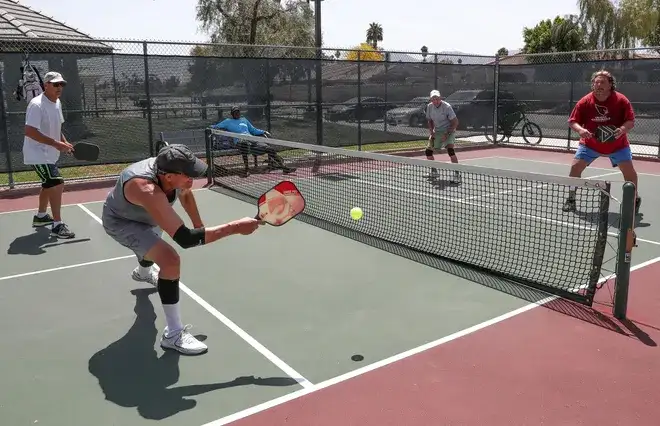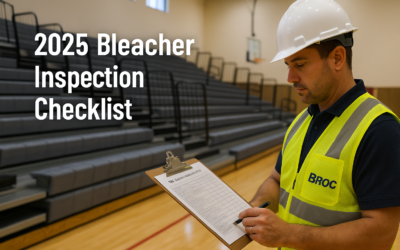Pickleball, a sport that combines elements of tennis, badminton, and ping-pong, has gained immense popularity in recent years. With its easy-to-learn rules and inclusive nature, many individuals and businesses are now considering converting their existing tennis courts into pickleball courts. Whether you own a tennis court that is underutilized or want to accommodate the growing demand for pickleball, this guide will provide you with all the information you need to successfully convert your tennis court into a pickleball court.
Understanding the Difference: Tennis Courts vs. Pickleball Courts
Before diving into the conversion process, it’s essential to understand the key differences between tennis courts and pickleball courts. While both courts may appear similar in terms of their layout, there are specific dimensions and features that differentiate them.
Court Size
Tennis courts typically measure 60 feet wide and 120 feet long, whereas pickleball courts are much smaller, measuring 20 feet wide and 44 feet long. These dimensions include the necessary game lines such as the no volley zone, out of bounds lines, and the net.
Netting
The height of the nets for both sports is similar, with both measuring 36 inches. However, pickleball nets have a slight variation, with the center of the net measuring 34 inches in height.
Singles and Doubles Court Sizes
Tennis courts have separate dimensions for singles and doubles matches. Singles courts measure 78 feet in length and 27 feet in width, while doubles courts measure 78 feet in length and 36 feet in width. In contrast, pickleball court sizes remain the same for both singles and doubles matches.
No Volley Zone
One significant distinction in pickleball is the presence of a seven-foot no volley zone, also known as “the kitchen,” which extends from the net. This area prohibits players from hitting the ball out of the air (volleying) within this zone. Tennis courts do not have a designated no volley zone.
Now that you understand the differences between tennis and pickleball courts, let’s explore the various methods for converting your tennis court into a pickleball court.
Methods for Converting a Tennis Court into a Pickleball Court
There are several approaches you can take when converting your tennis court into a pickleball court. The method you choose will depend on factors such as your space availability, budget, and the level of commitment you have towards pickleball.
- Shared Use: Adding Pickleball Lines
If you want to accommodate both tennis and pickleball players on the same court, adding pickleball lines is a simple and cost-effective solution. By incorporating pickleball lines onto your existing tennis court, players from both sports can use the facility. This shared use approach allows for flexibility and maximizes the use of the court.
To create a pickleball court on your tennis court, you can lower the tennis net to 34 inches in the center to meet the pickleball standards. The pickleball court lines can be marked using chalk, tape, or paint, depending on your preference and the regulations of your facility. It’s important to communicate and inform players about the dual use of the court to avoid any confusion.
- Dedicated Use: Converting the Entire Court
If you have a tennis court that is primarily underutilized or if you want to fully commit to pickleball, converting the entire court is a viable option. This dedicated use approach allows you to transform your tennis court into a pickleball-specific facility.
To convert your tennis court into a pickleball court, you will need to resurface the court and make modifications to the dimensions and features. One tennis court can accommodate up to four pickleball courts. However, it’s essential to consider the spacing between the pickleball sidelines and the fences to ensure sufficient playing area. Adding extra width can provide more room for active players and seating arrangements.
To ensure a professional and durable conversion, it is recommended to seek the assistance of a trusted subcontracting company like BROC. They have the expertise and experience to perform the necessary modifications, including resurfacing, line marking, and net installation.
- Multi-Sport Court: Enjoying Both Tennis and Pickleball
If you want to enjoy both tennis and pickleball on the same court without the need for constant modifications, a multi-sport court is an excellent solution. A multi-sport court allows you to have designated areas for both sports on a single court.
To create a multi-sport court, the primary sport’s lines (typically tennis) are drawn in a prominent color, while the secondary sport’s lines (pickleball) are marked in a faded color. This distinction helps players identify the specific boundaries for each sport. An easily adjustable net can be used to switch between tennis and pickleball effortlessly.
By opting for a multi-sport court, you can have the flexibility to play either sport whenever you like, without the need for extensive modifications or additional space.
The Process of Converting a Tennis Court into a Pickleball Court
Now that we have explored the different approaches to converting a tennis court into a pickleball court, let’s delve into the step-by-step process involved in the conversion.
Step 1: Assess Your Space and Requirements
Before starting the conversion process, assess your available space and determine the number of pickleball courts you wish to create. Consider factors such as existing boundaries, fencing, and any regulations or guidelines provided by your facility or local authorities.
Step 2: Prepare the Court
To begin the conversion, prepare the tennis court by ensuring it is clean and free from any debris or obstructions. This will provide a smooth surface for the court modifications.
Step 3: Mark the Pickleball Court Boundaries
Using chalk, tape, or paint, mark the boundaries of the pickleball court according to the standard dimensions of 20 feet wide and 44 feet long. Make sure to include the necessary lines such as the no volley zone and the service areas.
Step 4: Adjust the Net Height
Lower the net in the center of the court to 34 inches to meet the pickleball standards. This can be achieved by using hold-down arrangements or adjustable net sleeves. Ensure that the net is securely fastened to maintain stability during gameplay.
Step 5: Optional – Customize Your Court
If you want to add a personal touch to your pickleball court, consider customizing it with color schemes, graphics, or branding. This can be done through a professional resurfacing process that offers various customization options. Consult with a trusted subcontracting company like BROC to explore the possibilities and create a unique court design.
Conclusion
Converting an existing tennis court into a pickleball court is an excellent way to accommodate the growing popularity of pickleball and maximize the use of your space. Whether you choose to share the court, dedicate it to pickleball, or create a multi-sport court, proper planning and execution are crucial for a successful conversion. By following the step-by-step process outlined in this guide and seeking professional assistance, you can create a high-quality pickleball court that caters to players of all ages and skill levels.
Remember, a converted tennis court into a pickleball court offers endless opportunities for fun, competition, and social interaction. Embrace the pickleball craze and enjoy the benefits of this fantastic sport on your very own court.
Brought to you by BROC, the trusted subcontracting company for all your tennis court and pickleball court conversion needs.




